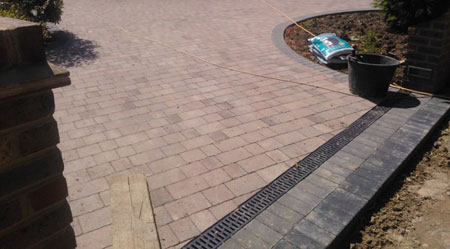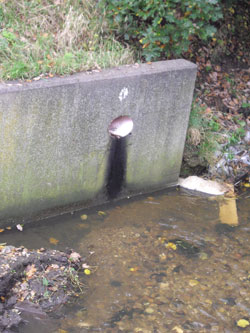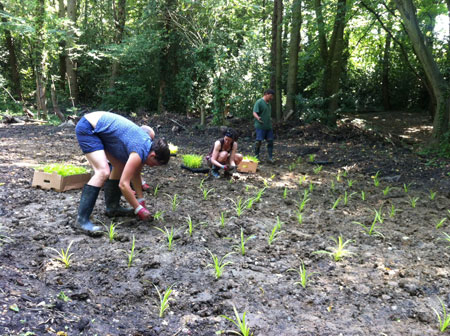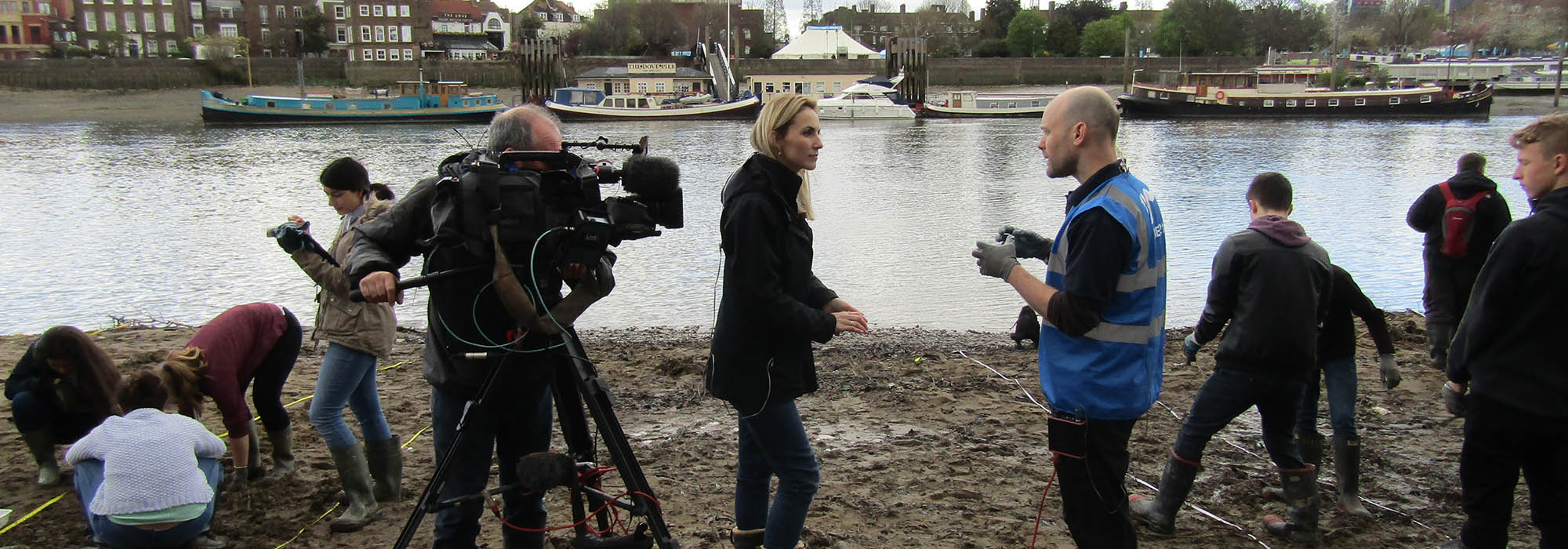Piecing our rivers back together
By Theo Thomas, Thames21.
Walking down a London street you might get the impression that we live in a green city. A window box here, a park there. But green space amounting to twenty two times the size of Hyde Park has been paved over in a generation. Not Hyde Park of course, or Regents Park or Finsbury Park. They remain fantastic reservations of recreation. It is smaller fragments of greenery that have been covered in housing, asphalt or concrete slabs. Front gardens have been turned into parking spaces. While there are reasons for this, the effect on rivers is devastating. We have shattered the urban water cycle; fractured the watershed. As a result our rivers are damaged by intense levels of pollution when it rains. It’s ridiculous we allow the toxic accumulations from our roads into rivers, some of which we draw our drinking water from.

We’ve paved over so much of London yet done nothing significant or coherent to address it. New laws came into force in 2008 requiring any paving of front gardens to be done with blocks that let rain through. Yet each time I stop to ask contractors if the slabs they are laying will allow water past they say no. I’d like to see the evidence that the law is being enforced as it is not what I find. In the absence of any effective strategic thinking we have put London at greater risk of surface water flooding at a time when the increase in heavy rainstorms makes it more likely.
Rivers suffer further as extensive paving means rain flows into them off our streets faster and in greater volumes. This prevents vegetation establishing and washes fish away. The velocity of water is something to behold. Placid streams become torrents.
If London was thinking it would have a comprehensive plan, out there, in public. We would see a network of micro-habitats created across the city. These would hold rainwater, clean the pollution from it and help cut air pollution. They would repair the fractured watershed, using nature to protect us from floods and heal our rivers.
 These green spaces can be called Raingardens or wetlands but all come under the banner of Sustainable Drainage Systems – SuDS. They are common in cities across America and parts of Europe and are seen as fundamental to the design of urban areas.
These green spaces can be called Raingardens or wetlands but all come under the banner of Sustainable Drainage Systems – SuDS. They are common in cities across America and parts of Europe and are seen as fundamental to the design of urban areas.
Retro-fitting SuDS in an urban environment is one of the greatest challenges facing green drainage. Yet it is in these settings where it is most needed. In London all but one of its rivers fails the European Water Framework Directive. It is pollution from stormwater run-off that’s a significant contributor to poor water quality.
In the London Borough of Enfield we are creating SuDS with the Council and Environment Agency. The contractors Maydencroft are working to designs by Robert Bray Associates. At Grovelands Park polluted road run-off that was sent straight into a stream via pipes now runs above ground through shallow ditches which filter out the heavy metals, oil and dirt. Upstream of Boxer’s Lake we have made a wet woodland, turning a small green space into a landscape that is closer to nature. As the run-off from Oakwood’s streets flows through the basins and around the trees it will lose its toxins.
Thames21’s focus in London is to create a mechanism that delivers SuDS; one that harnesses the desire of people for healthy rivers with the aspiration of Local Authorities to use new approaches, and do it in a cost effective way.
Without green drainage London will become increasingly greyer and dustier. Our rivers will be sicker and our streets more prone to flooding.

